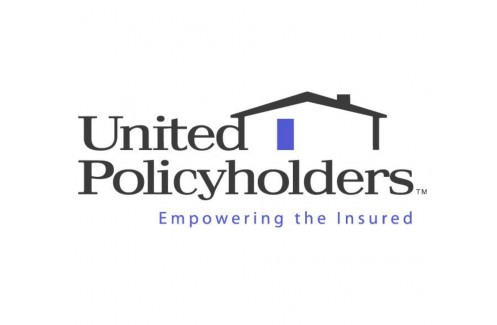Insurance companies claim that when claims numbers are simply made up, that act constitutes fraud. If that is so, then insurance company fraud statistics are a fraud. The often wrongfully cited estimate of $308.6 billion is an admittedly “make believe” estimate.
A recent article by Kenneth S. Klein in the Journal of Insurance Regulation, The Case for Pausing Any Immediate Embrace of the Social Inflation Argument for Legal System Reforms, 1 exposed how the numbers are simply made up and completely unreliable:
The challenge of getting a firm grasp on fraud is well-illustrated by the APCIA’s attempt to put a number on the cost. Citing FBI data, APCIA et al. (2022) quantify the impact ‘intentional and criminal acts perpetrated against an insurance company’ as $40 billion in aggregate and $400-$700 on average per household. But the cited FBI data describes premium diversion by insurance agents, fee churning by insurer intermediaries through reinsurance agreements, asset diversion when insurance companies are acquired by other companies, and fraudulent sale of workers comp insurance (FBI, 2010). In other words, the FBI is not quantifying fraud against insurers; rather, the FBI is quantifying fraud by insurers….
… In 2022, CAIF, in partnership with the International Association of Special Investigation Units (insurance fraud investigators), APCIA, the National Insurance Crime Bureau, and III, published a lengthy study conducted with the Colorado State University Global White Collar Crime Task Force 2022. The study estimates the cost of insurance fraud annually in the U.S., across all lines of business, is $308.6 billion, and of this amount, property and casualty insurance fraud (which is the focus of the social inflation literature) is $45 billion….
…In ‘approximately 1995,’ CAIF estimated the cost of insurance fraud in the U.S. as being $80 billion every year. The $80-billion figure was not from a published report but rather was a CAIF figure presented at a press conference. There is no archival documentation within CAIF of the press release, what fraud was measured, or how it was measured. Yet for decades, it was the most cited figure on insurance fraud.
In 2022, CAIF used the $80-billion figure as ‘a basic first step’ to estimate the cost of fraud more rigorously, starting with converting the baseline of $80 billion from 1995 into ‘present-day’ dollars, which was $145 billion. The researchers next considered several methodologies to generate their own data on fraud but rejected doing so because each had its own flaws. Therefore, the researchers used existing data from other sources. For P&C, the researchers concluded one of the most credible fraud estimates was the above-referenced 2010 FBI calculation of $40 billion. The second most credible and reliable data source was a III report from 1980, which estimated fraud accounted for 10% of all P&C claims based on interviews of claims adjusters or, as the researchers noted, equated to $38 billion if applied to 2016 LAE estimates. The primary data source the researchers relied upon was Insurance Research Council (IRC) data (including an IRC study of casualty fraud claims payments for automobile insurance bodily injury in 2012), leading to estimates that fraud in 2012 added between $5.6 billion and $7.7 billion to paid claims. The researchers decided to apply the III 10% figure to reported annual amounts of total LAE in P&C, which considered in comparison to ‘the costs … from FBI ($40 billion), III ($38 billion), and the IRC (between $5.6 and $7.7 billion in casualty fraud),’ led them to find ‘a current estimate of $45 billion appears credible and reliable.
Journalists and others should stop reciting this fraudulent statistic.
The problem with fraudulent statistics is that the insurance industry then wrongfully uses them in attempts to change or make laws to fit its political agenda. It gets people to repeat its fraudulent statements so much that others simply take them for truth. My post earlier this year, Property Insurance Litigation Statistics Fabricated By Insurance Industry, and Florida Politicians In Bed With Those Insurers, noted a study by an investigative journalist, Lawrence Mower of the Miami Herald and Tampa Bay Times, exposing how the insurance industry fabricated litigation statistics which were then recirculated and published without critical analysis if they were ever accurate.
I first raised the topic of these statistics being fraudulent and used for improper purposes 16 years ago in “Are Insurance Fraud Statistics Fraudulent?”
For years, a colleague of mine, Eugene Anderson has questioned whether the insurance industry is involved in a conspiracy against its own customers by claiming that a sizable portion of them are involved in insurance fraud. The insurance associations claim an enormous amount of insurance fraud is committed every year…
A more skeptical person may assume these statistics are made up by the insurance industry and broadcast by their paid spokespeople to assuage anger over their exorbitantly high premiums. A highly respected claims expert, Gary Fye, has suggested to me that the insurance industry propagandists are engaged in a wrongful attempt to create a culture where society suspects all claims are fraudulently created or inflated. It does not take a genius to figure out why insurance companies would love to encourage this myth among the general populace.
Just because one questions the truthfulness of insurance fraud statistics does not mean one supports insurance fraud. Insurance fraud is wrong, and it should be punished. As a society we must be ever vigilant against those who abuse the system. Indeed, that a few may attempt to destroy property or participate in other schemes to fraudulently make money from insurance companies is expected. We all suffer from these wrongdoings, and we should applaud audits and fair investigations that uncover fraudulent activity.
Professor Klein should be congratulated for his work exposing the untruthfulness of the insurance fraud statistic. He did it in a very professional, academic manner. I am calling it for what it is—fraud.
A Thought For The Day
Two wrongs never make a right.
—Alice Merlin
1 Kenneth S. Klein. The Case for Pausing Any Immediate Embrace of the Social Inflation Argument for Legal System Reforms. 42 J. Ins. Reg. 1 (2023).




